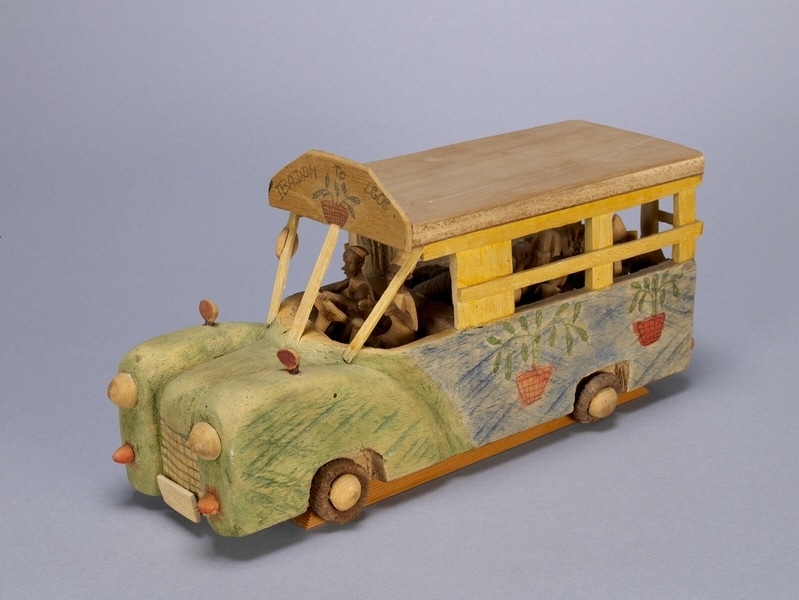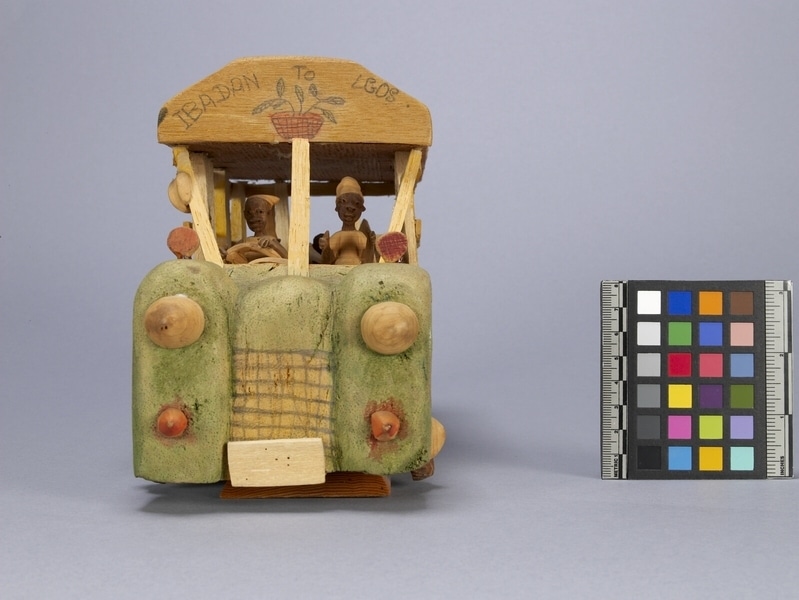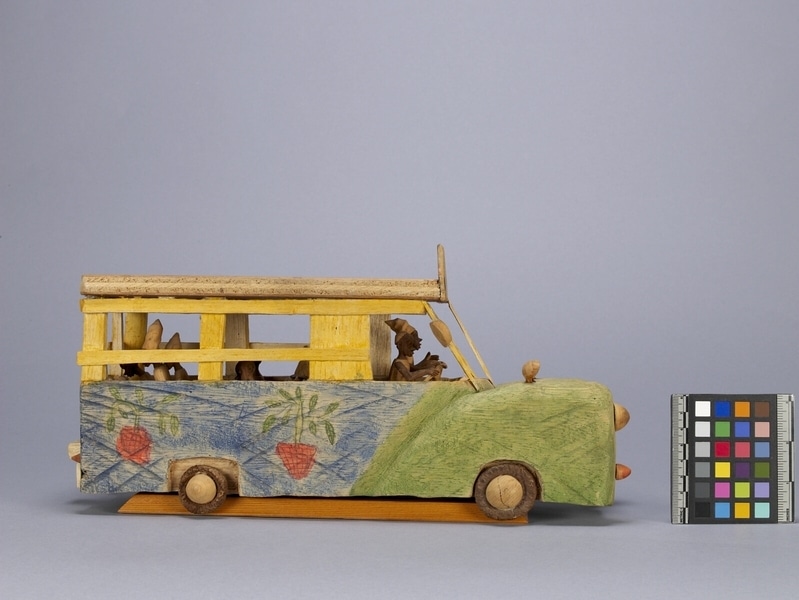Bus Carving Item Number: Af416 from the MOA: University of British Columbia




Description
A representation of a decorated bus, or mammy wagon, labelled 'Iban to Lagos', and carrying seven thorn carving passengers, a driver, and three assorted items. Six passengers are sitting on benches in the rear of the vechicle facing the back. They are wearing short garments, dresses, and shorts. One, in a dress, is wearing a conical hat. Another is wearing a high pointed hat. The driver is wearing a sleeveless shirt and a soft pointed hat. The front seat passenger is wearing a short dress and a high pointed hat while appearing to be in animated conversation. The bus has a steering wheel, a gear shift, eight lights, a dashboard, a rear loading platform, rear doors marked stop, a mirror on the driver's side, and hubcaps. The destination label, and sides of the bus are decorated with pictures of potted plants. Dashboard, headlights, interior fittings, clothing, and one cargo item are light yellow-brown. The figures' heads, limbs, the gear shift, two cargo items, and wheels are dark brown. Has a rectangular wood platform underneath.
History Of Use
Thorn carvings are miniatures depicting scenes from Nigerian life; this type of carving began circa 1930. Thorns were carved by men and they vary in size, they can be as large as 12.7 cm long and 9.6 cm wide; they are comparatively soft and easily carved. This carving of a bus, also known as a mammy wagon, shows the use of actual mammy wagons- they were supposed to carry farm produce from the hinterlands to city centres and markets. Produce was the priority for travel, so travellers would sit however they could in the space left over. This is why the passengers in the carving are sitting backwards and the produce is sitting closer to the driver. Mammy wagons are no longer prominent in Nigeria. The vehicles were almost always decorated.
Cultural Context
craft; tourist art
Specific Techniques
The light yellow-brown thorn and the dark brown thorn used here come from the ata tree; the light red-brown thorn comes from egun trees. The figures are composed from thorns of differing hues, each carved separately before the pieces are glued together with viscous paste made from rice cooked with water.
Narrative
This thorn carving was made specifically for the donors by the artist.
Item History
- Made in Nigeria before 1972
- Collected during 1972
- Owned by Andrew Stewart and Jessie Stewart before February 8, 1980
- Received from Andrew Stewart (Donor) and Jessie Stewart (Donor) on February 8, 1980
What
- Name
- Bus Carving
- Identification Number
- Af416
- Type of Item
- carving
- Material
- atum thorn, egun thorn, wood, stain and rice adhesive
- Manufacturing Technique
- carved and glued
- Overall
- height 18.0 cm, width 12.0 cm, depth 36.0 cm
Who
- Culture
- Yoruba
- Previous Owner
- Andrew Stewart and Jessie Stewart
- Received from
- Andrew Stewart (Donor) and Jessie Stewart (Donor)
Where
- Holding Institution
- MOA: University of British Columbia
- Made in
- Nigeria
When
- Creation Date
- before 1972
- Collection Date
- during 1972
- Ownership Date
- before February 8, 1980
- Acquisition Date
- on February 8, 1980
Other
- Item Classes
- carvings & sculpture
- Condition
- good
- Current Location
- Case 100
- Accession Number
- 0590/0102